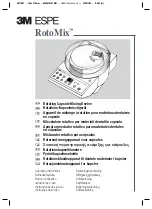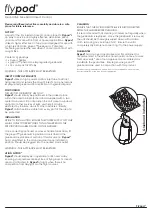
3-2
Chapter 3
Safety Related information and consideration
3.4.5
Holding function of STO state
P1-FS supports a function to hold STO state even after
releasing of Safety inputs depending on the parameter
settings. Please consider it when designing a system and, if
needed, prepare an external mechanism to avoid an
unintentional restart of the system. For more detailed
information, please refer to Chapter 4.
3.4.6
Internal state monitor output
Please use monitoring or completed signal outputs on SJ-
P1 when it is required to monitor the internal state of P1-
FS.
Please refer to Chapter 4 in this Guide.
Monitoring or completed signal outputs are NOT a safety-
related signal, but a reference signal. These signals must
not be used to activate another Safety function.
3.4.7
Periodical functional test
A periodical functional test to check proper functioning of
the using Safety function must be performed at least once
a year in order to maintain the intended SIL / PL.
Please refer to Chapter 10 for the details of the functional
test.
3.4.8
Caution for using the Safety function
The Safety function does not cut the power supply to the
inverter and the peripheral circuits, and does not provide
any electrical isolation. Before maintenance, please ensure
to separate the system/machine from main power supply
lines and from the other devices which may supply any
voltage (e.g. permanent magnetic motor, device including
capacitors). Additionally, wait more than 15 minutes and
check the charge lamp of the inverter, and then confirm
that the voltage between P and N terminal is lower than
45V before performing maintenance.
STO outputs must be connected to ST1 and ST2 on the SJ-
P1. The STO functionality is achieved only through the ST1
and ST2 connector of the SJ-P1 inverter.
With permanent magnet or synchronous reluctance
motors, i
n case of a multiple IGBT power semiconductor failure,
the inverter system can produce an alignment torque which
maximally rotates the motor shaft below regardless of the
activation of the STO function.
- 180/ (p/2) degrees (with permanent magnet motors)
- 180/p degrees (with synchronous reluctance motors)
p denotes the number of pole.
SS1/SLS/SDI/SSM functions supported in P1-FS can be only
applied to application in which motor shaft is not accelerated by
external force when torque to motor is shut off.
Summary of Contents for P1
Page 2: ...The picture is an example of installing P1 FS to SJ P1 ...
Page 8: ...C 3 Index Memo ...
Page 10: ...1 2 Chapter 1 Safety Precaution Risk Memo ...
Page 12: ...2 2 Chapter 2 Introduction to the Safety Function Guide Memo ...
Page 62: ...7 2 Chapter 7 Commissioning Memo ...
Page 64: ...8 2 Chapter 8 Verification and Validation Memo ...
Page 68: ...10 2 Chapter 10 Maintenance Memo ...
Page 72: ...11 4 Chapter 11 Specification and Technical data Memo ...















































